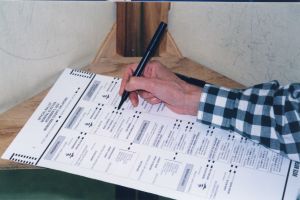
FRQ #3, SCOTUS Comparison.
A Minnesota law prohibited voters from wearing any “political”apparel, as defined by election officials, at or around polling places on Election Day. Director of the Minnesota Voters Alliance Andrew Cilek was temporarily prevented from voting when he entered the polling place wearing a shirt with a Tea Party logo and a button supporting a voter-ID law. His group and others sued Minnesota’s secretary of state, Joe Mansky, claiming the law unfairly suppressed their civil liberties. In Minnesota Voters Alliance v. Mansky, the Supreme Court held the law in question violated these voters’ rights. The Court said that the statute only vaguely defined “political” garb and thus afforded state officials too much discretion to create a zone that violates otherwise acceptable constitutional rights.
(A) Identify the clause in the Bill of Rights used as the basis for the decision in both Minnesota Voters Alliance v. Mansky (2018) and Tinker v. Des Moines (1969).
(B) Explain how the facts in the Tinker and Mansky cases differ and yet still led to similar outcomes.
(C) Explain how citizens who support this Minnesota law and disagree with the Minnesota Voters Alliance v. Mansky ruling could act to counter the ruling’s effects.